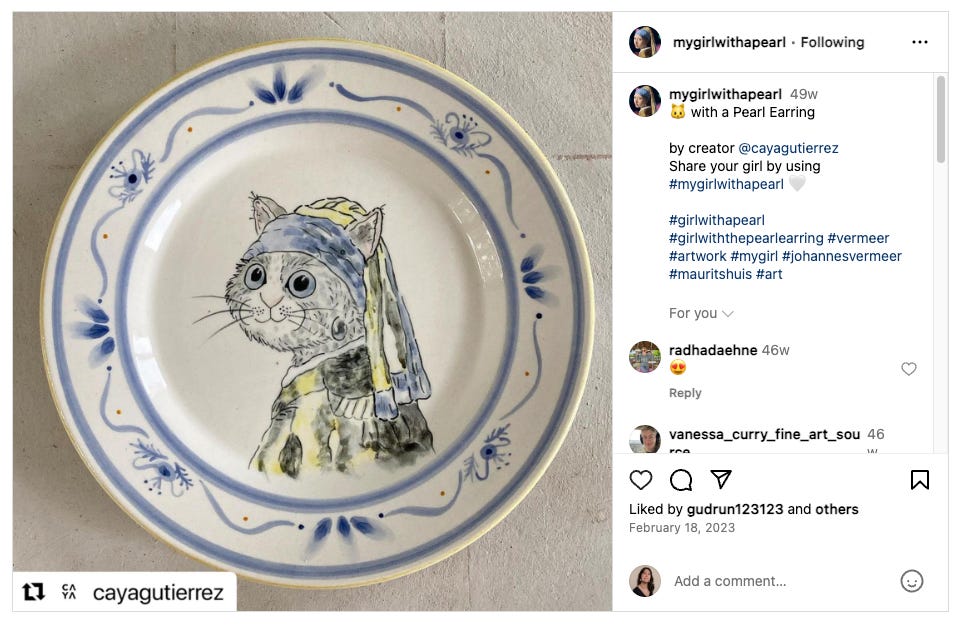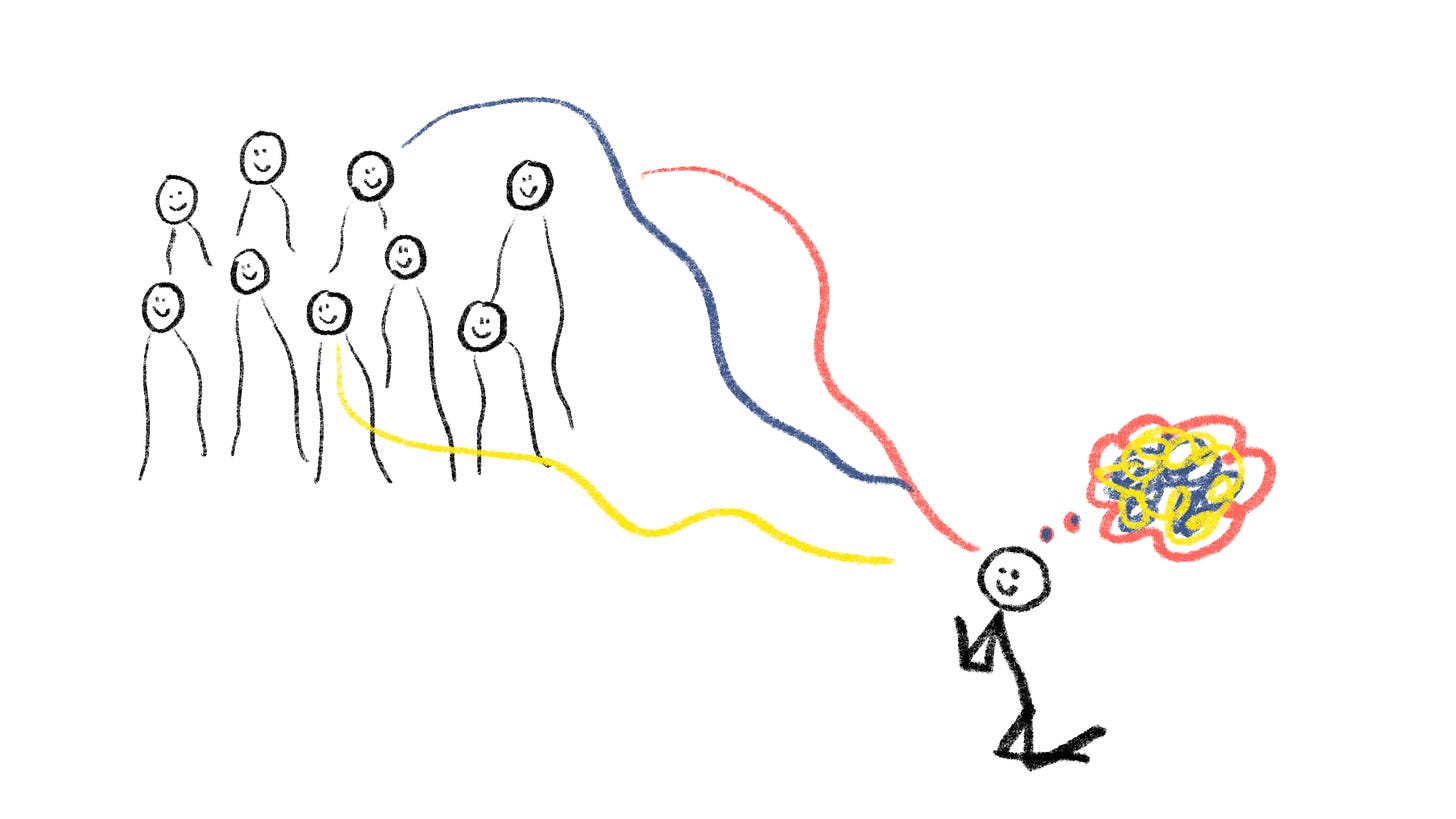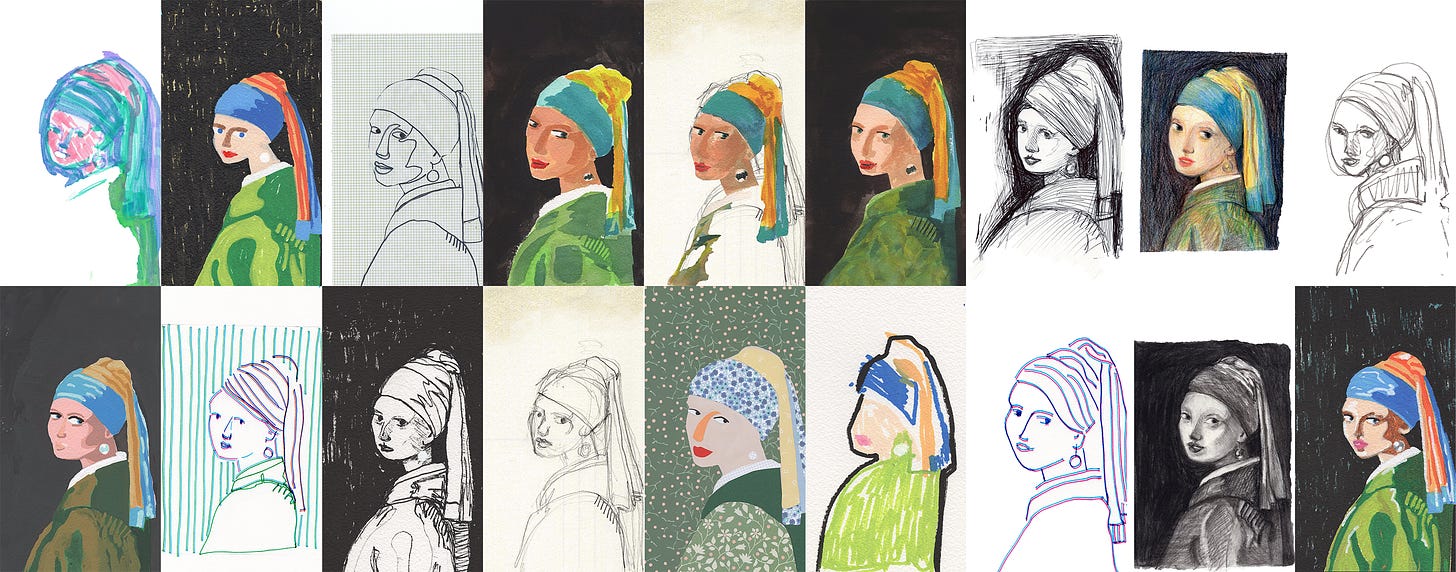A few weeks ago, I drew Vermeer’s Girl with a Pearl Earring in 20 different ways.
This endeavor was not just a creative pursuit; my intentions reflected the many interpretations and reimaginings artists have crafted over time in response to this iconic image. Since her creation in 1665, this stylish pearl-wearing woman has inspired many.

This got me thinking about muses.
I couldn't help but wonder (to the tune of “Holding Out for a Hero” by Bonnie Tyler): "Where have all the good muses gone, and where are all the gods?"
(This question echoed in my mind, referencing a WSJ article I yearned to read but, as a poor grad student, couldn't afford beyond the first paragraph.)
A muse is described as a person or personified force who is the source of inspiration for a creative artist. Having a muse or finding amusement is heavily associated with inspiration, creative influence, stimulus (like mental stimulation), and afflatus (divine creative impulse).


Muses aren’t necessarily gone from the world; they have just evolved.
At one point, a muse and a god were almost synonymous. In Greek and Roman mythology, the Muses, daughters of Zeus and Mnemosyne, presided over the arts and sciences. Artists and thinkers would invoke these female entities to guide their creative endeavors, described as whispering, breathing, or singing into the recipient.
Renowned psychologist Mihaly Csikszentmihalyi notes a historical shift in perspective about where we get our inspiration. Creativity, once attributed to supreme beings or gods, is now recognized as a human endeavor.
And what did the humans of our past do with all this creative power? They painted women, of course.
It doesn’t take an art historian-rocket-scientist to notice the historical associations of muses with female figures. It has undoubtedly raised questions about gender dynamics in creative inspiration, with traditional depictions in classic European oil paintings often emphasizing beauty and femininity.
Now, back to Miss Pearl Earring.
Though much remains unknown about the relationship between the painter and what he painted, Tracy Chevalier identifies "beauty, familiarity, and mystery" as defining qualities of this iconic masterpiece. In her insightful editorial feature on Google Arts & Culture, Chevalier sheds light on the intriguing nature of Vermeer's masterpiece. She observes:
“With her face turned partially away, we can’t really discern its shape. The line of her nose blends into her cheek so we don’t know if it is wide, snub, or round. Her look is universal rather than specific. In fact, the painting is not actually a portrait of a particular person, but what the Dutch called a tronie — the head of an ideal “type,” like “a soldier” or “a musician” — or, in this case, “a young beauty.”
Discovering that the Girl with the Pearl Earring is not a representation of a real person but rather an idealized portrait of youthful beauty brought a twinge of disappointment. Can I still appreciate this painting embodying an archetypal elegance rather than a picture of a curious individual?
While initially disappointing, this revelation sparks a connection to contemporary artificial intelligence in art. I can’t help but think of AI art and AI portraits and how such algorithms create artwork by combining multiple sources to create an ideal image. For example, this website shows pictures of human faces that don’t exist because the photos are made using the StyleGAN2 model. This has many ethical concerns I can’t get into right now.
We must recognize the evolving nature of the muse concept as inspiration reaches beyond traditional bounds.
Vermeer’s Girl with a Pearl Earring invites us to explore the connections between inspiration, artistry, and the timeless pursuit of beauty. She represents diverse sources, echoing the timeless theme of artists channeling inspiration from multiple ethereal entities. It challenges us to ponder the future muses where AI intersects with artistry.
Other Sources:





